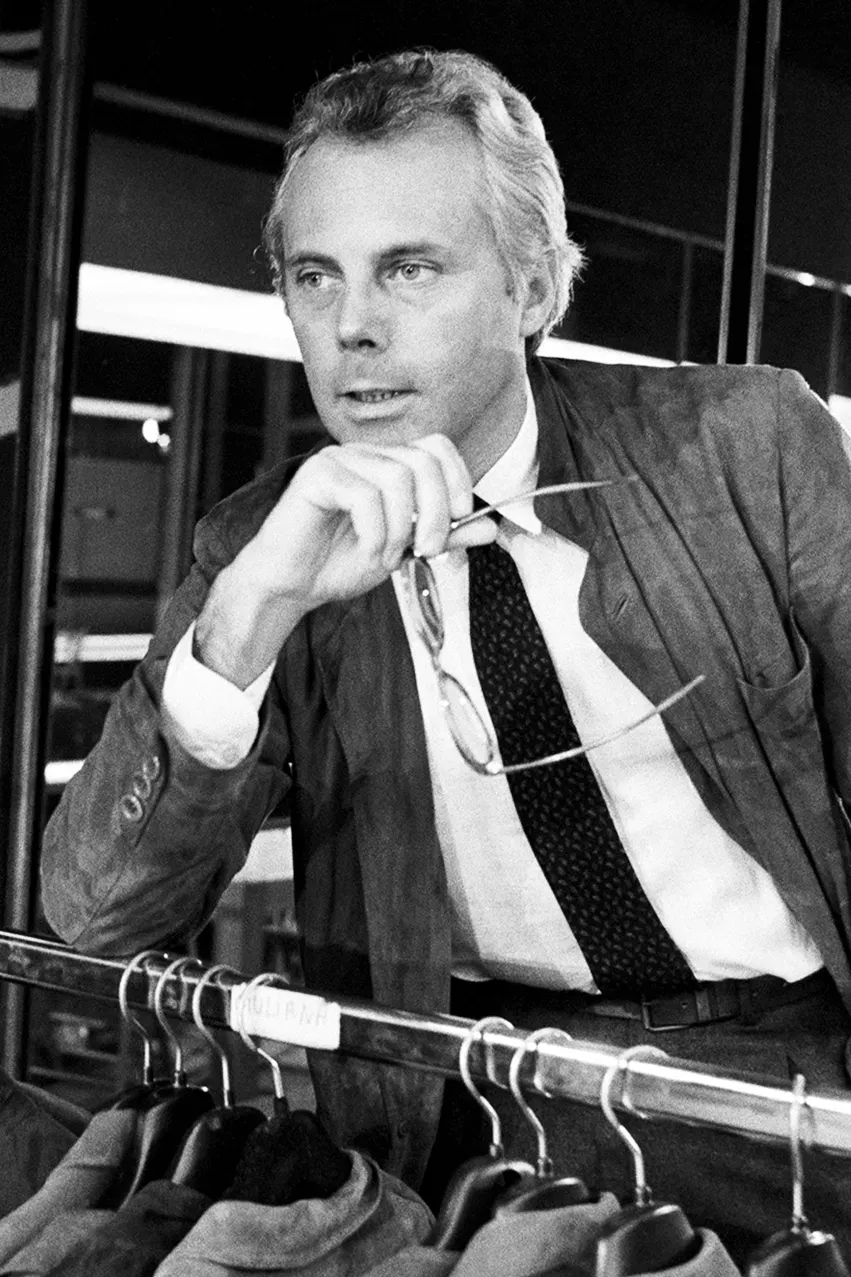S2 E2

WEEKLY NEWSLETTER FROM ANDREA BATILLA
THE STORY OF GIORGIO ARMANI

When Giorgio Armani begins working at Rinascente in 1957, he is 23 years old and Italy is about to enter a period of vertiginous growth that will be called the Economic Boom. Only 11 years have passed since the end of World War II, and the building in Piazza Duomo, leveled by bombs and rebuilt in 1950, is one of the symbols of a rebirth that involves consumption, industry, and the economy. It radically changes the tastes of Italians who quickly learn the comfort of well-being imported from the United States.
Armani finds himself, almost by chance, in the men’s clothing department at a time when all men wear the same formal office jackets and the same sweaters for leisure time. People still go to the tailor, still wear ties, and shirt collars are starched. But all of this is about to end, and Armani has the eyes of a young bourgeois boy who is not rebellious but is impatient with physical restrictions and with the rules imposed by a world that no longer exists.
In the years he moves nimbly between windows and counters, he learns to listen to customers, to choose, to remember, and above all he understands that you can look beyond without frightening anyone or exaggerating, and still manage to change things.
From that moment, the ethic of his work will always be focused on attention to the customer, on those who have to wear the clothes, on their bodies, their needs, fears, pleasures.
In 1965 he begins working for Nino Cerruti, who owns a men’s clothing company called Hitman, together with the Lanificio Fratelli Cerruti. Being inside the factory means crossing the line that separates commerce from creation, and learning from Cerruti is like taking an accelerated course in textile technique and tailoring construction. It is on those tables, under Nino’s watchful eyes, that Armani starts opening up jackets, removing stiff padding, and refusing to glue fabrics. In that laboratory of ideas, alongside tailors and pattern makers used to never giving up in front of any request, he realizes that men can dress differently, softer, lighter, without compression. That is where the idea begins to take shape that through fashion one can talk about practicality, essentiality, but also fragility and, of course, eroticism. A lot of taboos that during his professional life he will be able to sweep away.
To read the rest of the post you need to subscribe. Through a paid subscription you will help me produce more contents.
SUBSCRIBE (Opens in a new window)
Already a member? Log in (Opens in a new window)


